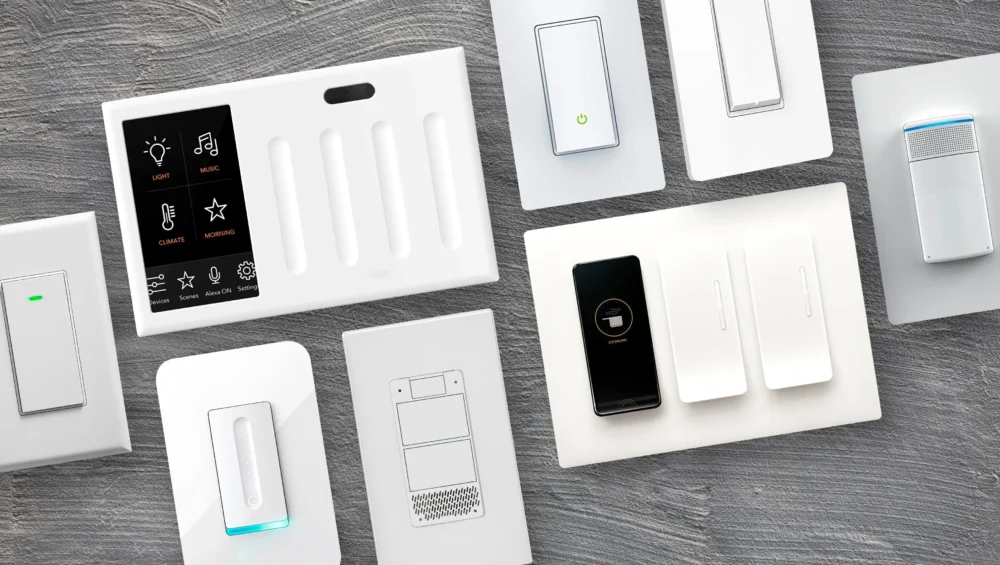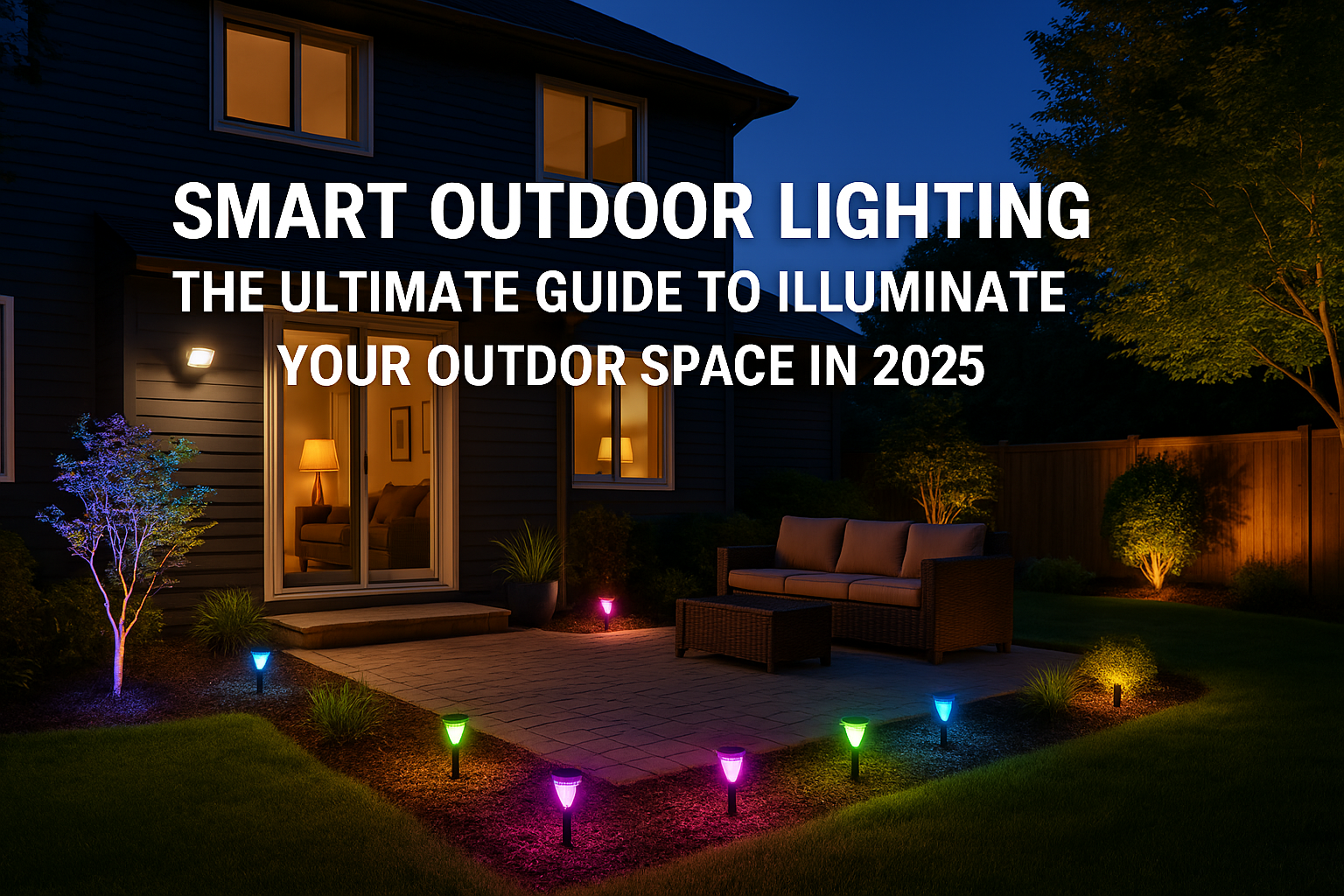How to Automate Your Lights Using Smart Sensors and Voice Assistants

Automating your home lighting with smart sensors and voice assistants is a game-changer—not just for convenience but also for energy savings and security. Imagine walking into a room and having the lights turn on automatically, or saying, “Alexa, set the lights to movie mode,” and your lighting dims to perfection. Smart home lighting isn’t just trendy; it’s practical, eco-friendly, and surprisingly easy to implement.
This guide will show you how to automate your lights with smart light automation tools, outline their benefits, and provide actionable steps to set up smart home lighting. By the end of this post, you’ll feel confident about transforming your home into a smart, intuitive living space.
What Are Smart Light Sensors?
Smart light sensors are devices designed to detect motion, light levels, or occupancy and adjust lighting automatically. They are at the heart of smart home lighting systems and offer incredible versatility for customization.
Types of Smart Light Sensors:
- Motion Sensors
These detect movement and adjust lighting accordingly. For instance, they can turn on lights when you walk into a room and switch them off when it’s vacant, saving energy.
- Ambient Light Sensors
These sense the light levels in a room and adjust your smart lighting accordingly. They’re ideal for maintaining consistent brightness throughout the day.
- Occupancy Sensors
These go a step further by detecting whether someone is actively using a space rather than just walking through it.
Smart sensors are easy to install and pair seamlessly with voice assistant lighting control, which increases their functionality and convenience.
How Voice Assistants Work with Smart Lighting
Voice assistants like Alexa, Google Assistant, and Siri play a crucial role in controlling your smart lighting setup. With simple voice commands, you can customize every aspect of your home’s lighting:
- Amazon Alexa supports smart lights from brands like Philips Hue, LIFX, and Wyze. By saying, “Alexa, turn off the living room lights,” you can control lighting hands-free.
- Google Assistant integrates with smart lighting devices via Google Home, letting you command lights with, “Hey Google, dim the lights to 50%.”
- Apple’s Siri works through HomeKit-compatible devices, enabling seamless interaction with statements like, “Hey Siri, set my bedroom lights to blue.”
These voice assistants act as the control hubs of your smart home lighting system, managing automation, routines, and settings.
Step-by-Step: How to Set Up Smart Lighting Automation
Follow these home automation tips to create an energy-efficient and convenient smart lighting setup:
Step 1. Choose Your Smart Lights and Sensors
- Opt for smart bulbs, light strips, or switches compatible with your voice assistant.
- Include motion or ambient light sensors for automation.
Step 2. Set Up a Smart Hub or App
Most smart lighting systems require an app or hub to connect and control your devices:
- Alexa users will use the Alexa app.
- For Google Assistant, install Google Home.
- Apple users need the Home app to control HomeKit devices.
Step 3. Install and Pair Your Devices
Install your smart light fixtures and sensors following the manufacturer’s guide. Pair them to your app or hub.
Step 4. Configure Routines
Set up routines or scenes based on your lifestyle. For instance:
- Create a “Good Morning” routine to turn lights on gradually.
- Set a “Movie Mode” for dimmed, cozy lighting in your living room.
Step 5. Test Voice Commands
Integrate voice assistant lighting control by linking the app to your Alexa, Google Assistant, or Siri. Test basic commands like:
- “Alexa, turn on the kitchen lights.”
- “Hey Siri, set the hallway lights to bright.”
Step 6. Regularly Update and Optimize
Keep your system updated to take advantage of new features, and tweak your routines for improved personalization.
Real-Life Examples and Use Cases
Here’s how smart light automation adds significant value:
- Turn Lights On/Off Automatically
Sensors can turn lights on when you walk into a room and off when you leave, ensuring no energy is wasted.
- Simulate Natural Light with Dimming
Program your smart lighting setup to gradually reduce brightness at sunset, mimicking the natural transition to evening.
- Vacation Mode for Security
Configure lights to turn on and off randomly while you’re away to give the impression someone is home.
- Set the Mood with Voice Commands
Use commands like “Alexa, set the lights to movie mode” or “Hey Google, make the lights romantic.”
- Motion-Activated Security Lighting
Install outdoor smart sensors that trigger lights when motion is detected, deterring potential intruders.
These practical examples show just how much smarter your home can become with minimal effort and investment.
Benefits Recap
Smart home lighting has become a must-have feature, and here’s why:
- Convenience: Control your lights without lifting a finger or leaving the couch.
- Energy Savings: Prevent wasted energy by using motion and ambient light sensors.
- Enhanced Security: Use smart lighting to simulate occupancy and deter intruders.
- Personalization: Adjust lighting to suit moods, tasks, or occasions with ease.
FAQs About Smart Light Automation
Can I automate my lights without a smart assistant?
Yes, you can! Many smart light sensors and bulbs can function through their dedicated apps without needing Alexa, Google Assistant, or Siri. However, adding a voice assistant greatly enhances the convenience and functionality of your smart home lighting setup.
Do smart light sensors work without Wi-Fi?
Some basic smart light sensors work offline via Bluetooth. However, for voice assistant lighting control or remote access, connectivity through Wi-Fi is essential.
What’s the easiest way to get started with smart lighting automation?
Start small with one room. Invest in a smart bulb and pair it with a voice assistant like Alexa. Experiment with basic routines such as scheduled light changes, then gradually expand your system to other rooms.
Get Started with Smart Lighting Today!
Smart light automation is a stepping stone into the world of home automation. With minimal setup, you’ll enjoy energy-efficient lighting, enhanced convenience, and a new level of comfort and security.
Ready to make your first move? Choose one room to start and explore smart sensors and voice assistants like Alexa, Google Assistant, or Siri to turn your vision of a smart home into reality!
Click here to discover everything you need to know about smart light sensors and how they can transform your space into a smarter, more energy-efficient home.
